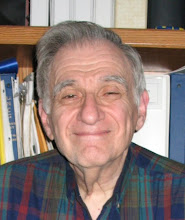China’s burgeoning demand for electrical energy is straining the country’s ability to provide the coal that is needed to fire the power plant boilers; about 80% of the country’s electrical energy comes from coal. Coal mining in China is a deadly industry with last year’s toll being 3,786 killed in mine accidents. Unfortunately, it is liable to get worse as many unsafe mines are opened to meet the growing need. What is not being publicized in the news announcements, such as in a recent New York Times article, is that in addition to the horrible human cost in mining, is the likely effect upon both the power generation and the environment.
The majority of coal-fired electric generating plants (90%+) use an electrostatic precipitator (ESP)to remove the fine fly ash particles from the gas stream before it exits the stack. Most power plants, in our country, and many others, design and optimize the boiler and ESP, plus auxiliaries including the coal pulverizer, air preheater and ash handling system, for a specific coal, which is used exclusively for the operating life of the power station.
From the New York Times article, I concluded that many Chinese power stations will be making “spot” purchases of coal, to keep operating, rather than relying on long-term contracts. In other words the coal purchased one-month could be different than the coal purchased the following month. What does this mean?
China has a huge variation in their coals, with different compositions and heat values. For example in a plant set–up for a low ash coal that switches to one with a high ash having a lower heat value, because of what is available on the “spot’ market that month, will mean that the power generated by the station will be de-rated because less heat energy is available from the coal that could be fed to the boiler. The additional fly ash could overwhelm the ESP. If, at the same time, the sulfur and trace sodium in the new coal is significantly lower, the operation of the ESP will be worsened even further. Particulate emissions from some plants could increase by a factor of 2 to 4, or even more. Fine particulates emissions currently cause many early deaths in China. This is why, in our country, there is a stringent, generally enforced, particulate National Ambient Air Quality Standard based upon particles of 2.5 μm or less.
From everything that I hear, the push in China today is for more, more, more electrical generation. To keep the power stations going, mine safety, decreased generation from some stations and worsened emissions will follow behind.

5 comments:
When do you think China is going to wake up and smell something other than pollution? My husband makes frequent trips to China. He usually comes home with a cold or sinus infection. We have come to the conclusion it is due to the extreme air pollution they have in their country.
Angie,
I wouldn't venture a guess! When the NPC believes that the problem is severe enough, they will direct larger portions of their growing economy proceeds into environmental pollution technology, instead of what they are currently doing with it. It is all a matter of priority.
Norm, it's all very scary! I knew the casualties in the coal mines were high, but I was stunned by your number. I also didn't expect low-sulfur to pose an environmental problem. I 'm used to looking at sulfur in coal as the problem, and low sulfur as good. This is a twist! Thanks for the education. Steve
Steve, I was not trying to negate the one benefit that would be derived from switching to low-sulfur coal, which is less SOx, which of course means less acid rain. I was talking about the effect upon the operation of the electrostatic precipitator (ESP) used for particulate control (my area of expertise); more than 90% of coal fired electrical power generation uses the ESP for particulate control. Less than 1% of the SOx is as sulfur trioxide that controls the surface electrical resistivity of the ash particles. Less sulfur means less sulfur trioxide, and an increase of the ash resistivity. This throws the ESP (without going into details) into a tailspin. Performance degrades and the particulate emissions go through the roof. Larger ESPs are needed for higher resistivity ashes. There are some work a rounds such as adding small amounts of sulfur trioxide to the flue gas before it enters the ESP, a practice known as gas conditioning. If the plant operator has to work with different coals from the spot market, he will be pulling out his hair. Norm
Steve, I was not trying to negate the one benefit that would be derived from switching to low-sulfur coal, which is less SOx, which of course means less acid rain. I was talking about the effect upon the operation of the electrostatic precipitator (ESP) used for particulate control (my area of expertise); more than 90% of coal fired electrical power generation uses the ESP for particulate control. Less than 1% of the SOx is as sulfur trioxide that controls the surface electrical resistivity of the ash particles. Less sulfur means less sulfur trioxide, and an increase of the ash resistivity. This throws the ESP (without going into details) into a tailspin. Performance degrades and the particulate emissions go through the roof. Larger ESPs are needed for higher resistivity ashes. There are some work a rounds such as adding small amounts of sulfur trioxide to the flue gas before it enters the ESP, a practice known as gas conditioning. If the plant operator has to work with different coals from the spot market, he will be pulling out his hair. Norm
Post a Comment